[Marsha Mailick, Vice Chancellor, Research and Graduate Education, University of Wisconsin-Madison]
I am very pleased to welcome you to this public talk series sponsored by the Department of Biochemistry, the great Department of Biochemistry. And we’re thrilled to have Svante Paabo here with us this afternoon.
This talk is part of the Biochemistry Colloquium’s International Steenbock Lectureship, and that’s funded by the estate of Harry Steenbock.
Svante Paabo is a world-renowned researcher from the Max Planck Institute for the Evolutionary – for Evolutionary Anthropology in Germany. He’s a founder of the field of paleogenetics, the study of ancient D.N.A.
He uses D.N.A. obtained from ancient bones to piece together human origins and the history of how we spread across the globe. He has shown how much DNA we share with Neandertals, and how some genetic variance from the Neandertals are beneficial, while some are involved in disease. And my colleague Aseem Ansari, Professor of Biochemistry, will tell you more about Svante’s work and introduce him.
Thank you.
[applause]
Thank you, Marsha.
[Aseem Ansari, Professor, Department of Biochemistry, University of Wisconsin-Madison]
This is the first International Steenbock Symposium Lecture series, and it has been an unusual one because this is the first time, we’ve actually had a second lecture in the Historical Society. So that tells you of the broad appeal of the deep and abiding question, the mystery that Professor Paabo is investigating.
That is, of our origins, of our human origins. Where did we start? What other types of archaic humans might have been? And where are we today? How do they contribute to our being here?
He started this, I first noticed his papers from 1987, where he was among the first people to clone a mummified D.N.A. from Egyptian mummies. And from then onwards it has been just an intellectually stimulating series of contributions, both scientific and science – making it accessible to general audiences. That’s what you’re seeing today.
You can see much of that work in over 290 papers that he’s published, most of them in the worlds – some of the world’s best journals, but even more interesting I recently discovered I had not seen this before, but I recently discovered his book The Neandertal Man. And this tells you about his personal journey, as he traveled through those 30 years, making his way, in the last few years, deciphering the Neandertal genome at incredible resolution, you hear about it today, as well as Denisovan genome and other archaic common studies that he’s pursuing.
With that I would also like to say, those 30 years, the – the advancements that he’s made, both scientific and conceptual, have brought him numerous awards. Last – Yesterday, when I tried to introduce him, I sort of mixed things up because they were just so many, you know. So, today Ive decided not to try and list all the awards that he’s won, except to say that he’s won some of the most prestigious awards and is a member of some of the most prestigious societies and national academies. Most people work a lifetime to be a member of one national academy. He’s a member of a dozen, including the U.S. National Academy of Sciences, German, Swedish, Finnish, Russian. Uncommon to have that and has been widely recognized for his amazing and penetrating work.
I would also like to point out that he has had a direct impact on UW, he’s contributed to UW in many ways. First of all, bringing the science and the humanities communities here together. General audience. This is one very clear evidence of his impact on our community. The second one is Jesse Dabney and his mentor Bill Aylward, who’s studying Troy.
Where is Jesse?
Jesse, stand up.
There he is, stand up, stand up.
Jesse is Paabo’s student. He did his PhD work at the Institute, the Max Planck, that Marsha just mentioned. And he is now here with my – William Aylward, trying to essentially build the Molecular Archaeology Group. This is an attempt to bring together chemists, genomicists, biomathematicians, anthropologists, archaeologists, et cetera. So, this – already you can see Svante’s immediate impact on our – on our community and we look forward to all sorts of wonderful things that this Molecular Archaeology Group will do for us with Jesse and William at – at its helm. With that, let me invite Professor Paabo to tell us about the amazing stuff that he’s done over the last several years.
[applause]
[Svante Paabo, Director, Max Planck Institute for Evolutionary Anthropology]
Thank you very, very much for the very generous introduction. I’m both pleased and honored to be here for this first Steenbock symposium.
I have had two wonderful days on campus talking to many, many people and learning many things.
So, what I then wanted to do is to talk to you a bit about how we have been able to reconstruct the genome of Neandertals, relatives of Neandertals, what we learned from that, talk a little bit about what we begin to learn from studying the genomes of very early modern humans outside Africa and in the end talk a bit about functional implications of this. Those functional implications of the contribution from Neandertals and Denisovans their relatives to present-day humans. And what we can learn maybe about what’s specific to humans relative to Neandertals.
But let me start out by then pointing out what you already know, I think –
[slide of a chromosome with the D.N.A. highlighted in the chromosome]
– that our genetic materials, D.N.A. stored on chromosomes in all cells in our body so we can study our genome looking at D.N.A. from such chromosomes from any cells.
[slide of the double helix D.N.A. molecule with the four-letter nucleotides and their connections]
And this D.N.A. molecule, as you know, let’s see if I – I do have a pointer here – this D.N.A. molecule is double stranded, as you know. The information is encoded in a sequence of four letters or nucleotides. And the two strands are really important because when a cell divides there is enzymes in the cell that take these strands apart and you synthesize new strands with the old as a template in a very exact process.
[Svante Paabo]
But there are then errors that are sometimes made. Sometimes a wrong base is built in. You have a mutation. And if this happens in the germline and it’s not repaired before the next separation comes, it will appear in the next generation as a mutation that you can detect in the form of a difference between two human DNA sequences that you compare.
[slide of two human D.N.A. sequences, one normal and one with a mutation]
So, if you compare two genomes of people in this room, you have a difference about every 1200, 1300 such letters, there’s a difference between two genomes.
And these mutations rain down on our genomes approximately as a function of time.
[slide of three D.N.A. sequences, two human sequences with one with a mutation and the third sequence from a chimpanzee showing the nucleotide differences between humans and chimps]
So, if we add in here a chimpanzee, you will have more differences. You will have about a difference every 100 bases or so. So, if you’re now interested in the history of our genomes or the history of a D.N.A. sequence, what you will do is study these differences, use the best models for –
[Svante Paabo]
– that we have for how these mutations accumulate, and reconstruct the history, and depict it in the form of a tree like this.
[slide of a mutation tree from a common ancestor]
Very simple in this case. The two human sequences go back to common ancestors recently, much further back once shared with the chimpanzees.
[slide of the 22 different chromosomes]
And you know also that we have three billion bases in our genome. So, a difference every thousand or so means there are three million differences between any two genomes, also between the two genomes inherited from your father and your mother, so there’s a lot of information to reconstruct history here.
[slide of a world map]
And if you now do that and look on this variation world-wide, what you will find is that you find most variation in Africa.
[large blue circle appears over Africa]
And you take the entire world outside Africa, although there are a lot more people living outside Africa than inside Africa, because you have less variation there.
[smaller blue circle appears over Asia]
And in addition, most of the D.N.A. sequences you find outside have close relatives inside Africa. But there is a component, if you like, of the variation inside Africa that have no close relatives outside.
[the variation inside Africa is shown on the map by a dark blue pie slice of the African circle]
So, the interpretation of this pattern is then that modern humans, that is the direct ancestors of people living today, evolved in Africa, accumulated variation there, and a part of that variation went out –
[red arrow animates from the African circle to the Asian circle]
– and colonized the rest of the world.
You can also estimate approximately when that happened. And it’s rather recently in sort of evolutionary terms –
[Svante Paabo]
– within the last hundred thousand years or so.
So, when these modern humans then came out of Africa, they must have met other forms of humans –
[slide of a map of Africa, Europe and Asia with arrows pointing out of Africa to other points in the world, including an arrow that ends in a Neandertal skull in Europe.]
– that existed since a long time in Eurasia. So, Neandertals to western Eurasia, other forms farther east in Asia.
[slide of a skeleton shows up at the end of the arrow pointing to East Asia]
And we are then, our lab, is sort of, if you like, sort of obsessed with these Neandertals.
[slide of two skeletons, a Neandertal on the left and modern human on the right]
You may then ask – well, first of all remind you about the fact that Neandertals are then this sort of robust humans. They appear in Europe and western Asia about 400,000 years ago and exist there until around 40,000 years ago when they become extinct.
And around that time then modern humans appear on the scene.
And you may then ask why should we be so interested in Neandertals?
[Svante Paabo]
And I think there are two major reasons for that. The first one is that they are the closest evolutionary relatives to all present-day humans today.
[slide indicating that Neandertals define modern humans]
If we sort of should define ourselves as a group, it’s them from a genetic perspective or biological perspective, it’s them that we should compare ourselves to. The other thing, interesting thing, is, of course, that they were here rather recently, like 3000 generations ago or so there were Neandertals in Europe. You may ask what happened to them? How are we related to them?
[slide indicates question of What happened to the Neandertals?]
– and things like that.
[Svante Paabo]
So, that’s something that, the latter question, has been debated a lot in paleontology. Sort of, what happened when modern humans came out of Africa?
[slide with a bar graph on it with 0% – total replacement on one end and 100% – total continuity on the other end]
Did they totally replace the Neandertals so there was – would be no contribution whatsoever from Neandertals to present-day people? Or is there mixing up to sort of a suggestion of that Neandertals would be the direct ancestors of Europeans? A sort of 100% contribution, if you like.
[slide of a Neandertal top skull]
So, we sort of got a chance to then start asking this question in the 90s when we got access to the Neandertal type specimen. This is a – a fossil that was found in 1856 and gave its name to this group of hominids, the Neandertal. It was actually the first time that one realized there had been other forms of humans around before present-day people.
[slide of bones of a Neandertal]
So, we took a sample of this thing here –
[slide of a Neandertal bone with a small sample cut out of it]
– a rather big piece we needed at that time. We use much less now,
[slide of an ancient Egyptian mummy]
– and we could then build on already 10 years’ or more experience of trying to retrieve D.N.A. from ancient remains. Work that then started with studying ancient Egyptian mummies and showing that sometimes there could be D.N.A. preserved in them.
[Svante Paabo]
But also realizing very rapidly after the first sort of results that there are lots of problems with this.
So, one problem is that the ancient DNA degraded –
[slide comparing fresh D.N.A. strands – as solid lines to Ancient D.N.A. – very short lines]
– to really small pieces. So, 50, 60 base-pairs long, whereas you have 10-, 20,000 bases, base-pairs-long pieces if you extract D.N.A. from a blood sample of you.
There are chemical modifications here. And there is, of course, a lot less preserved per gram of tissue, on the order of 10,000 to million-fold less than you would have in a – in a fresh bone.
[Svante Paabo]
There are other problems too. One problem is that the D.N.A. here is present in a vast excess of microbial D.N.A., D.N.A. from bacteria and fungi that colonized the bone when it was in the ground. And all this leads to that if you have tiny amounts of present-day human D.N.A. that you may have in, say, dust particles in a room like this around many people, a large part of the dust is actually skin fragments from people. And one such dust particle may easily contain much more D.N.A. than you have in your experiment here. And these small amounts, when you study present-day D.N.A. –
[slide showing dust D.N.A. as a smaller part of fresh D.N.A. than Ancient D.N.A.]
– are so small so they wouldn’t at all disturb or show up when you, sort of, study D.N.A. from a fresh blood sample. But in this situation here the same amounts can totally overwhelm your experiments. So, actually, the very first mummy D.N.A. that I cloned and published in Nature in hindsight was sure of contamination from myself.
[laughter]
[Svante Paabo]
But we don’t talk about that. That’s secret.
[laughter]
So, then I developed over the years lots of funny things –
[slide with a photo of researcher in decontamination suit and sealed work area for extraction of D.N.A.]
– to avoid contamination. You dress up in funny clothes, you work in a room with filtered air, irradiate your equipment and UV light, and so on.
[slide showing a complete genome as an oval with a control region highlighted]
And at the time, we focused on a tiny part of the genome that is inherited from mother to offspring, the mitochondrial genome. The advantage of that for this work is that it occurs in many copies per set. There’s a much bigger chance that some fragments would survive of it.
[slide of a phylogenetic tree including chimps, humans and Neandertals]
So, we reconstructed part of the mitochondrial genome and estimated such a phylogenetic tree as I illustrated in the beginning.
[Svante Paabo]
All present-day mitochondrial genomes go back to a common ancestor quite recently, 100, 200,000 years ago. And what we found was that the Neandertal mitochondrial genome goes much further back –
[return of the phylogenetic tree including chimps, humans and Neandertal]
– half a million years or so. And since then, one has studied more Neandertals and 10s of thousands of humans, and it’s very clear there’s no modern human today on the planet that runs around with a mitochondrial genome from a Neandertal.
[return of the bar graph of total replacement and total continuity]
So, in this sense of things, it is total replacement.
[Svante Paabo]
But it is also clear that this is a very small part of the genome. The big story is in the nuclear genome –
[slide with and illustration of the nuclear genome]
– that’s inherited both from mothers and fathers and that has a lot more information. And I think I am on – on the published record in some newspaper 10 years ago or 11 years ago saying we will never be able to sequence the nuclear genome of a Neandertal. There’s too little there. It’s chemically modified. It can’t be done.
And I guess it goes to say you should never make negative predictions like that in science because you’re generally overtaken by things. And what often overtakes you is technical developments, of course.
[slide with photos of high throughput D.N.A. sequencing machines]
And what I hadn’t anticipated that came along was High Throughput D.N.A. Sequences – Sequencing. The ability to sequence millions and billions of molecules really rapidly.
[slide showing process of High Throughput D.N.A. sequencing]
So, you then can take all the D.N.A. from such a fossil, sequence all the molecules, make your database, and start comparing it to the human genome.
[slide with a photo of the Vindija Cave in Croatia]
This worked for the first time from the site in southern Europe, in Croatia from this bone –
[slide of the Croatian bone that was first sequenced using High Throughput D.N.A. sequencing]
– that’s about 40,000 years old.
[slide showing a bar graph of the high frequency of D.N.A. base pairs as a function of fragment length]
And, indeed, the fragments are very short what you get here, 40, 50 base pairs.
[Pie graph showing percentages of D.N.A. base pairs in an ancient bone sample]
The very best bones have something like three or 4% endogenous D.N.A., all the rest is microbial.
[slide showing the High Throughput D.N.A. sequencing process]
And we worked very hard for a few years on improving the methods of extracting these things, converting into form that can get into the sequencing machines.
[slide of bones that have been sequenced – 200 D.N.A. extracts from 70 fossils from 16 sites]
Looked at many sites and many bones to find the ones with the most Neandertal D.N.A. in them.
[slide of the three Neandertal fragments that were used]
Focused on three fragments of bones from three different individuals. You may notice that these are sort of tiny fragments of things. In fact, there is very good evidence that in this cave –
[Svante Paabo]
– and in many other caves where Neandertals lived, they consumed each other. So – so, say, the long bone, such as tibia, this one, the shinbone, have been crushed to get to the bone marrow in – in the bone to eat it. There are cut marks where muscles attach and so on. That is probably the key also to why the D.N.A. is so well preserved in those bones because when you have burials, we begin to have less good DNA preservation. I think if you bury a body you have mounds of microbial activity that consumes the body. If you sort of cut it up, chew off all the bone –
[return of the slide of the three Neandertal bone fragments used]
– and throw the bone in the corner of the cave, it dries out rapidly. So, sort of, you have less microbial activity. So, I think we actually have cannibalism to thank for that this project worked so well.
[laughter]
[slide with two models of High Throughput D.N.A. Sequencing machines and the number of fragments sequenced by each]
So, we sequenced a little over a billion fragments from this, most of them bacterial –
[animation showing Neandertal genomes being mapped to the human genome]
– mapped into the human genome, taking into account the typical errors we see in this ancient D.N.A. –
[slide of the U.C.S.C. webpage with the first draft of the Neandertal genome project showing that approximately 55% of the genome had been mapped in 2010]
– and then had slightly over half the Neandertal genome in 2010 when we had the first draft.
[slide asking the question was there interbreeding between Neandertals and modern humans?]
So, we then asked this question. Would there have been a contribution to present-day people?
[Svante Paabo]
We asked it in different ways. The most direct way was the same to say –
[slide showing map of Africa with arrows pointing towards all the lands that modern humans emigrated with a question mark at the end of the arrow in Europe and a statement saying the expectation is that Europeans should share more genetic variants with Neandertals than Africans]
– that if modern humans coming out of Africa meet Neandertals in Europe and mix with them, then we would expect Europeans today to share more genetic variants with the Neandertals than Africans today, where there had never been Neandertals in Africa. So, there’s no reason to assume that Africans should have any special relationship to Neandertals.
So, it is this idea simply, if there is no contribution here, then Neandertal is just as far from someone in Africa as someone in Europe.
[slide showing the genetic trees for replacement and assimilation for Asia, Europe and Africa]
If there is a contribution, there should on average then Neandertal should be closer to people in Europe today.
[World map with a black dot in the eastern Mediterranean Sea]
So, we can compare the Neandertal genome then to genomes of people today that we sequenced and make very simple tests.
[Under the map appears two African genomes one from the San people with the genetic variant T and one from the Yoruba people with the genetic variant G]
If you start by testing this in taking two Africans, finding all places where they differ from each other, and then take the Neandertal genome –
[the Neandertal genome animates on the map between the two African genomes with a question mark as to the genetic variant]
– and see how often does the Neandertal match the variant this African has or this African. Since Neandertals are not expected to be contributed to Africans, there is no reason to assume that Neandertal is closer to one African than the other African, right? And that’s indeed what we see.
[the number of variants of each genome animates on under the two African variants showing the numbers compared to Neandertals are similar]
Statistically speaking, no difference here.
[Svante Paabo]
But that was then, to my surprise, different when we looked at a European versus an African. We find more matching to a French person here –
[slide animates to replace San African genetic variant with French genetic variant to show that the French variant matches more to the Neandertal genome than the Yoruba African variant]
– than an African person.
[slide animates again to replace the French genetic variant with a Han Chinese genetic variant to show an even closer association with the Neandertal variant than the Yoruba African variant]
Even more surprising, a Chinese person versus an African person, again, more matching.
[slide animates again to replace the Han Chinese variant with a Papuan genetic variant to show an even closer association with the Neandertal variant than the Yoruba African variant]
And finally, even Papua New Guinea, where for sure there have never been Neadertals, we find more matching.
[Svante Paabo]
So, the sort of idea that came out of this was to say, to explain why we find a contribution also in parts of the world where Neandertals have not lived, was to say that these early modern humans that come out of Africa –
[return to the slide of Africa with arrows pointing towards the places that modern human emigrated to from Africa with the location of Neandertals in the Middle East shown as the word Neandertal in a red box pointing towards the beginning of the move out of Africa by modern humans]
– they go through the Middle East and we know there are Neandertals there, if they mix with Neandertals early on and then move out in the world, they will sort of carry with them this contribution –
[slide animates red lines superimposed over the black lines of the arrows to represent the mixing of Neandertal genetic materials with modern human genetic materials and arriving in all the places that modern humans emigrated]
– out to the rest of the world to the extent, then, that one or 2 percent of the genome, if your roots are outside of Africa, come from Neandertals.
So, we published this in 2010.
[Svante Paabo]
There was a lot of sort of scientific follow-up over – over this general model, a sort of too simple of course, but overall, it has held up pretty well.
[slide of science article headlines supporting the theory]
It was very satisfying. But very soon after we published this, I also started realizing that the general public was very interested in what we were doing. I can never stop myself from sort of pointing out –
[Svante Paabo]
– then, that we started getting a lot of correspondence also from the public. E-mails and letters from people who self-identified as Neandertals –
[laughter]
– and offered us sort of hair samples and blood samples to study. And after a while I started sort of noticing a pattern in this correspondence, and that was it was almost – was only almost men who wrote –
[laughter]
– to say they were Neandertals and very few women who said they were Neandertals.
[bar graph showing high number of men self-identifying as Neandertal compared to very low number of women who self-identified as Neandertal]
So, I sort of presented this to my research group as my research. I count emails, I also do something useful. And they were, of course, hyper-critical as they are always of anything I say. They say this is just entertainment. Men are more interested in molecular genetics. They will write to you, women don’t. And I went back to my mails and found that that is not at all true because there were plenty of women who said they were married to Neandertal men –
[laughter]
and – and so far, not a single man who claims that he is married to a Neandertal woman.
[bar graph expands to data showing the number of women married to Neandertal men as opposed to men who are married to Neandertal women]
So, that’s, of course, very interesting, as a geneticist, a transmitted pattern like that. So, that is sort of one thing to follow up.
[Svante Paabo]
Well, we do a bit of other things too. We work with colleagues in Russia that excavate particular in Siberia –
[slide of world map showing site of Denisova Cave in Siberian Russia]
– in particular this site on the border to Mongolia and China, Denisova Cave.
[slide with photograph of Professor A.P. Derevianko]
It’s Professor Derevianko, who leads these excavations and finds amazing things.
[slide with a photo of the Denisova cave taken from the outside of the cave]
This is the site, and they found this bone in 2010.
[slide with a photo of the bone that was found in the Denisov cave]
It’s a phalanx of the toe. It turned out to come from and Neandertal.
[slide showing that from this bone 99.9% of the Neandertal genome was sequenced]
We were able to sequence the genome to very high quality. So, we sort of have covered every position to which we can map this toe fragment 50 times over. So, we really have everything of this genome.
[Svante Paabo]
So, you can begin to do more detailed things. You can look at a certain chromosome –
[slide of chromosome number 9 mapped between modern humans in blue and Neandertals in red]
– that you are interested in, say, in different people today and mark in red here the fragments that come from Neandertals. And you will see that different people have different fragments from the Neandertals, but indeed, over all it adds up to about one or two percent of the genome of a person from Asia or Europe.
[slide asking the question is one to two percent Neandertal genome in modern humans a lot or a little?]
You could ask then. Is that a lot or a little? A sort of stupid question, what is a lot or a little. But just to give a perspective on this –
[Svante Paabo]
– might be to say, of course, if you think of your own family tree.
[slide showing a typical genetic family tree with percentages attached to each generation]
You have 50% of your DNA from your mother and from your father, 25% from a grandparent, one more generation back 12%, 6%, 3%, and on average one and half % six generations back.
[Svante Paabo]
So quantitatively speaking, in terms of the amount of D.N.A., it’s as if you have one Neandertal ancestor six generations back.
[slide animates to show one red rectangle in the green family tree representing a Neandertal ancestor six generations back]
But that would of course have been in big chunks since this is smaller chunks, but in terms of amount that’s sort of what it is.
[slide with the question of how much Neandertal genetic material remains today?]
You can say how much of the Neandertal genome still lives on today?
[return to the map of the #9 chromosome comparing Neandertal genetic material to modern human genetic material]
So, since we have different fragments here you can sort of go along the chromosome and parcel together a bigger piece of the Neandertal genome in the computer by jumping from person to person in this room. And it turns out that it’s in the order of something like 40% or 50% of the Neandertal genome is still walking around on two legs today sort of in people.
[return to the photo of the Denisova cave from the outside]
But they found other things also and still find things there in this cave site.
[slide of a photo of Russian scientists working inside the Denisova cave]
They found this other very small fragment.
[slide of a photo of the small fragment found in the Denisova cave with a human hand for size reference]
It’s part of the last phalanx on the finger of a child.
[slide showing that they were able to sequence 99.93% of this Denisova genome]
We sequenced a good genome from that one too.
[slide of a genetic tree showing that the Denisova genome is not a Neandertal but the Denisova genome and Neandertal genome come from a common ancestor]
And we were very surprised to find that it was not a Neandertal, not a modern human, but something very distantly related to Neandertals.
[slide animates to show that the common ancestor between Denisova and Neandertal was about 400,000 years ago compared to the 100,000 year modern human and Neandertal common ancestor]
So, say about four times deeper than the deepest split between any human population when you look at this bit to Neandertals. There is a distant relatives to Neandertals.
[Svante Paabo]
We debated a lot about what to call them and ended up calling them Denisovans after the site, Denisova Cave, where they were found.
[slide with the question posed of Denisovans interbreeding with modern humans?]
You can ask for these groups in Asia, have they contributed to present-day people?
[slide with the map of the world indicating all the places in the world were Denisovan genetic material is found – mostly indicating Asia, the Pacific and the Americas]
And indeed, they have. You find a little bit, way less than 1%, in mainland Asia, nothing in Europe, and out in the Pacific you find up to about 5% of the genome in people in Papua New Guinea or aboriginal Australians, sort of, come from these Denisovans.
[slide of the map of the world]
To summarize then what we think we know about the origin of Neandertals and Denisovans and modern humans from studying genomes, we sort of think that they have some origin in Africa, the Neandertals and Denisovans.
[an arrow animates out of Africa with a dispersal of Neandertals in western Eurasia represented by a blue shading]
They come out and evolve then in western Eurasia to what we call Neandertals –
[slide animates out of Africa with a dispersal of Denisovan to Asia represented by a red shading]
– and in eastern Eurasia to what we call Denisovans. It’s sort of a megalomaniacal thing to put them all over Asia. We don’t know how they were distributed. There were for sure other forms of hominids there too.
[Svante Paabo]
There were hominids in Indonesia for sure and other things in China. But we do know that at some point they were at this site, the Denisova Cave.
[slide animates to show a comingling red and blue – of Neandertals and Denisovans around the area of the Denisova cave]
There were Neandertals at some time and at some other time Denisovans there.
Then modern humans have an origin in Africa –
[new arrow out of Africa showing modern humans emigrating out of Africa to the world where Neandertals and Denisovans exist]
– start spreading out of the Middle East seriously 50, 60,000 years ago. They mix early on with Neandertals –
[slide animates to show modern humans spreading throughout Europe and Asia comixing with Neandertals and Denisovans]
– continue to spread. And there is now good evidence that there was later mixing, say, in the ancestors of Asians because they have a bit more Neandertal ancestry. Somewhere in Southeast Asia presumably modern humans mix with the Denisovans and continue out in the Pacific. And these other groups disappear and become extinct –
[the red and blue of the Denisovans and Neandertal fade out of the map leaving only arrows representing the dispersal of modern humans]
– but live on then in the form of, sort of, one to two percent in Europeans and Asians and another 5% on top of that in Papua New Guinea.
[Svante Paabo]
Now we sequenced two archaic genomes. We found several cases of interbreeding with modern humans. So, I wouldn’t be surprised say in China in the future one would find other cases with other groups.
And indeed, when modern humans spread across Africa, I wouldn’t be surprised if one mixed with other forms there too since one did it outside and one might find that in the future. So, you may then ask, what happens with this contribution of Neandertal D.N.A. in modern humans? And we now begin to be able to follow that because there is now more and more work on really early modern human genomes too, in – particularly in Europe.
[slide with a table showing the date B.C.E., the indigenous versus intrusive peoples and the geological age]
So, there was a project where we were involved and David Reich’s group at Broad and Johannes Krause’s groups in Jena studying 51 early modern human individuals between 45,000 years ago and about 10,000 years ago.
[graph with the date on the x axis and the Neandertal ancestry percentage on the y axis]
So, you can then look on how much Neandertal D.N.A. did you have in these early modern humans. If you go back in time and these are people today having one to two percent and then we go back in time and we then find sort of a steady increase in amount of Neandertal D.N.A. as we go back-
[slide animates to show an increase in the percentage of Neandertal D.N.A. increasing as one goes back in time]
– suggesting, and there’s other lines of evidence too, suggesting that there is, sort of, selection against this in a human population, that this Neandertal variance often or slightly disadvantageous and we are slowly sort of losing them over time.
But in this study we found also a surprise.
[Svante Paabo]
One of the 51 individuals was totally different from the others, had a lot more here.
[slide animates on an outlier on the chart around 40,000 years ago]
And this individual then is this –
[slide of a photo of the mandible bone of the outlier in question]
– it’s a mandible from Romania. It’s 40,000 years old. It’s a very early modern human, found from this cave site.
[slide with a photo of the cave where the mandible was found]
[slide with the genetic makeup of the #12 chromosome from the various bones sequenced]
And if we just look at, say, one chromosome here and compare this individual to other early modern humans and present-day humans have fragments of Neandertals indicated in color,
[slide animates to show the large amount of Neandertal D.N.A. in the mandible sample]
this individual, then, has a lot more. And in reality, these black spots here we have no information since it’s such a very low-quality genome. So, it seems that over half this chromosome is solidly of Neandertal origin.
[slide animates to show the Neandertal D.N.A. in all 22 chromosomes in the mandible sample compared to the other samples]
And genome-wide we find a seven such large, large readings. And this then suggests that this individual had an Neandertal ancestor very recently.
[slide showing recombination of Neandertal and Modern humans creating mosaic chromosomes with Neandertal as two red lines and modern human as two green lines]
So, of course, if you have a Neandertal and a modern human and they have a baby –
[slide animates to show modern human and Neandertal baby having one red line and one green line]
– the baby – oops – try again – the baby will have one chromosome of Neandertal origin and one of modern origin. If this baby now goes on to live in the modern human population and has children, it will have children and start recombining here.
[slide animates to the second generation of the Neandertal and human reproduction showing this babys ancestors having a mix of their D.N.A. as represented by both babys ancestors with red and green lines]
So, there will be big chunks in the first generation of Neandertal origin, and as the generations go on these chunks will become smaller and smaller due to recombination.
[Svante Paabo]
So, from the size of these we can then estimate how far back in the family tree was there an Neandertal here? And there’s a large plasticity in this but you can say that six, five or four generations back there must’ve been a Neandertal ancestor here.
[slide of the genetic family tree for the mandible owner showing a very recent Neandertal ancestor in the tree]
So, we’ve sort of almost caught them in the act of doing it with a Neandertal here, within six generations.
[return of the slide of the world map wit blue shading for Neandertals and red shading for Denisovans and arrows coming out of Africa for modern humans]
We know that there has been local mixing here too.
[return of the slide with total replacement (0%) on one end and total continuity (100%) on the other end with Asian peoples animating in at 2% and Melanesians animating in at 7.5%]
So, very clearly, we have rejected this idea that there was total replacement. We have rejected this idea. There is this contribution, but it’s sort of a small contribution, less than 10% or so. The big picture is still our variation comes out of Africa. So, we like to call this a leaky replacement, saying most of our variation comes out of Africa. There’s a little bit of contribution from other groups.
[slide of a map of Europe and Asia showing the location of the 51 modern humans from 45,000 to 7,000 years ago represented as dots on the map]
So, just to give you a feeling for where one can go now with early modern humans then. If you look at these 51 individuals that we studied in this age range, you can sort of begin to ask lots of questions about what happened after Neandertals disappear and when these modern humans come here.
[slide asking the question about genetic relationships?]
You can look at your genetic relationships among these early modern humans.
[slide of a genetic matrix of all 51 modern humans with the percentage of Neandertal genetics represented by a more yellow than orange color]
And a way to illustrate that is simply to list all the modern humans here and there and do a matrix where the more yellow you are, the more closely you’re related overall in the genome. Just to illustrate this, if we take Chinese and a sort of southern Chinese individual, you find that they are particularly related to other Chinese and Native American individuals. The colors don’t come through so well, but this is more yellow than other things.
[Svante Paabo]
If we now first look here on the very old individuals we have, this 40,000-year-old from Romania and a 45,000-year-old person from Russia, the striking thing here –
[return to the slide of the matrix with the Romanian and Russian samples circled]
– is that they seem to be related to no one else. There’s no yellow in this comparison here. So, these early guys –
[return of the graph with date on the x axis and Neandertal percentage on the y axis with the Romanian outlier on it]
– this one and this one –
[slide animates to circle the two outliers]
– the very earliest modern humans we have –
[slide with two photos, one of the Romanian mandible and one of the Russian bone]
– is of these individuals seem to be related to no one else today really. So, it really seems that the very first modern humans that come, say, to Eurasia either become extinct or absorbed into Neandertals. These early pioneers are not ancestors of anybody today.
[slide of a human skull from 37,000 years ago]
That, then, changes from 37,000-year-old. This is the earliest individual we looked at that actually is an ancestor to people today.
[slide of a map of Russian and Europe with Kostenki, Russia shown on the map]
It’s from this site in western Russia here, Kostenki.
[return of the genetic matrix of all 51 modern humans and their percentage of Neandertal D.N.A.]
This individual is related to people today.
[matrix animates to show the Kostenki sample in the matrix]
So, from 37,000 years ago, all individuals we’ve looked at so far actually have at least some ancestry they contributed to Europeans today.
[Svante Paabo]
You can then move forward a time a bit to a 35,000-year-old individual from Belgium.
[map of Europe with the location of the Belgian location shown]
[return of the genetic matrix that animates to circle the Belgian samples genetics]
You can see how that individual here is related and particularly actually to people from this later group of closely related individuals.
[a box animates on to the genetic matrix showing where the most Neandertal D.N.A. is with its proximity to the Belgian sample]
[return of the map of Europe and Asia indicating the location of the Belgian sample]
So, these are individuals that live a lot later –
[the Miron Cluster animates on the map showing their locations]
– like 15,000 years later.
[map of Europe during the last Ice Age]
So, you can then begin to look at this. You have this person –
[the location of the Belgian sample animates on the map]
– 35,000 years ago, in Belgium is sort of particularly related to someone in Spain –
[location of the Spanish sample animates on the map]
– 18,000 years ago, and then to people even younger –
[location of the middle European samples animate on the map]
– that are in middle Europe again. And of course, what happens in this time is the Ice Age, right?
[Svante Paabo]
So, what we are looking at here is really the retraction of populations to the south during the Glacial Maximum and then recolonization of Europe again. So, we see population movements within Europe in this time. We see no influence from outside Europe actually.
[table with the alleles of the Near East modern humans on the x axis comparing them to the Kostenki sample on the y axis]
So, if we do an analysis here where we sort of illustrate how many alleles one shares with ancient individuals with different places in the world, for example the Near East that is of relevance. Around Syria you see no special relationship with the Near East. And that then changes when you come to around 14,000 years ago.
[graph animates alleles on, and a red dotted line animates on at the 14,000 year mark where there is an increase in genetic similarity]
From 14,000 years ago you suddenly start seeing a special relationship with the Middle East.
[Svante Paabo]
And it’s this group of people named after this site in Italy then.
[map of Eastern Europe showing the Villabruna cluster of samples with an arrow animating out of Turkey towards Italy]
So, around 14,000 years ago there is some kind of influx of genes from the Middle East to Europe. And that is sort of the first time one sees that. It’s also interesting that nothing that had been suggested by archaeology or so that there was something happening at that point.
[Svante Paabo]
I think also for later times this study of genetic history actually comes up with quite a few surprises. To just sort of illustrate this then what we know about European history of modern humans, we have this earliest period where modern humans come but disappear, no relatives later on.
[table of the 51 modern humans analyzed that animates to show a top area where there are no genetic descendants today in green]
Then we have a period of 38 to 15,000 years ago where there’s sort of movements within Europe, but you see no influx into Europe.
[table animates to shows large area of samples in yellow where there are few genetic descendants]
That then changes –
[table animates to show a large area in blue after 14,000 years ago where the amount of genetic connection increases]
– after that with this Near Eastern connection, and there’s lots later then influx from the East and from many places.
[Svante Paabo]
But, so, if we then come back to the Neandertals and the Neandertals mixing with present-day people, one thing you may ask is, does that matter?
[slide asking the question is there a functional Neandertal contribution to modern humans?]
Is there anything functionally relevant to us today from – from this contribution from Neandertals?
[slide showing probability of Neandertal ancestry in chromosome #20 across three individuals, European, East Asian and Sub-Saharan African, in three tables]
You can work over the entire genome here in Europe, say, or in Asia and look for part of the genome where many people today have something, where like 50% of people have a Neandertal contribution here that’s shared with Asia. There are other things here that’s unique to Asia or unique to Europe.
If you just ask statistically what links are there, that’s then as a group, that’s genes keratin, sort of involved in skin and hair.
[Svante Paabo]
So, we don’t know functionally what that means, but we will probably in the future learn that there is some aspect of physiology or morphology, the hair and skin, of people in Europe and Asia that comes from these extinct hominids. There are other more for functionally interesting things.
[slide of the risk variant for Type II diabetes genetically graphed]
There is, for example, a risk variant of the gene, risk for type II diabetes, that –
[slide with a map of the world where this genetic risk factor is highlighted as blue dots]
– turns out to be quite high frequency over in Asia and Native Americans. About 25% allele frequency. That variant comes from Neandertals –
[table of the genetic tree of risk versus protective gene variants in human genomes as compared to Neandertals with the type II diabetes risk factor circled]
– very clearly. You may sort of ask why is it that something that gives you a problem today, that gives you diabetes, comes over from Neandertals and rises to high frequency? And the speculation there would be that that has to do, that variance that may cause diabetes today when you eat too much during your whole life –
[Svante Paabo]
– may actually help you in a period of starvation. So, it may be that this is some kind of Neandertal adaptation to starvation.
Denisovans have also contributed to things that are functionally relevant.
[slide with two photos of Tibetans with the caption High altitude adaptation in Tibet]
The most spectacular example, I think, is – is in Tibet, where people are adapted to living at high altitudes, to have less complications in pregnancy, for example, than – than other people who move there.
[slide of the EPAS1 gene variant]
It was already known that a major component of that adaptation is a variant this gene here, EPAS1.
[slide of relative commonality of the EPSA1 variant in peoples of the world showing high incidence of the variant in Tibet]
And a group at Berkeley showed then that this variant is very common in Tibet, hardly present anywhere else.
[Slide of the EPAS1 genetic variant genetic tree]
And that comes over to the ancestor Tibetans from Denisovans. So that is something then that is quite important for the ability to live at high altitudes in the Himalayas.
[map of the world indicating commonality of Toll-like receptors in the peoples of the world]
There are other things, receptors important in immune systems, defense against viral infections that come –
[slide of commonalities of toll-like receptors between Neandertals, Denisovans and humans]
– both from Neandertal and Denisovans –
[slide of toll-like receptors graphed to commonalities of Neandertals and Denisovans]
– and are associated in populations today, for example, –
[the graph animates to circle those Neandertal and Denisovan genetics that show increase resistance to a bacterium that causes ulcers]
– in resistance to bacterial infection that gives you ulcers. So, if you don’t have an ulcer you might thank the Neandertals perhaps for that.
[Svante Paabo]
But these same variants are then associated with an increased risk problem with allergic diseases. Allergists may sort of blame the Neandertals perhaps.
So, overall, there is quite a lot of things genome-wide –
[slide of positively selected archaic gene variants in four graphs of human geolocations with the gene variants that help modern humans circled]
– that seem to be positively selected that come from Neandertals. Many of them have to do with immunity and many with skin and pigmentation actually.
[return to the map of the world with arrows coming out of Africa to represent the dispersal of modern humans into the world]
So, there is sort of a picture emerging then where these modern humans come out, meet these groups that have lived for hundreds of thousands of years in the environment in Eurasia. These groups are adapted to things there in their environment. Some of the variants come over to modern humans, are positively selected, and rise in frequency in present-day humans. So, something you could call adaptive introgression, or so.
[slide of an illustration of human organs that are affected by Neandertal and Denisovan genetic variants both positively and negatively]
But you should not lose track of the fact that most Neandertal variants that we know what they do or are associated with today actually come from studies in medical genetics and are just associated with either the risk for disease or reduced risk of disease and we don’t really know. They don’t seem positively selected or anything like that.
[Svante Paabo]
And this involves many diseases by now, say, blood clots, skin diseases, even things like tobacco use, or – or depression, or things like that.
So, the last thing –
[slide asking what was not contributed to modern humans by Neandertals?]
– I sort of wanted to bring up is another aspect of this. And that is to say what was not contributed by Neandertals. What is unique to modern humans?
[slide with graphs of the 22 chromosomes]
You can sort of look chromosome-by-chromosome here, indicated in red in Europe and green in Asia, frequency of contributions from Neandertals. And then you can say, are there parts of the genomes where we statistically would expect to see a contribution from Neandertals, but we don’t? And, yes, there are such regions.
[Svante Paabo]
You can say, what is hiding in those regions where we seem to select against something from Neandertals? So, one way to ask that is simply to say, genes in those regions, where are they expressed in the body more than you would expect by chance?
[slide with a chart of enrichment of tissue-specific genes in regions deficient of Neandertal ancestry – with the tissues on the left and percentage of various genomes and chromosomes on the top]
And if you ask that question there is only one tissue that stands out, and those are testicles.
[animation on the chart to circle the testes and their resultant percentages]
So, the male germline. So, that then is very suggestive that there was some problem maybe in the hybrids with sort of male fertility.
[slide with the question of decrease male fertility in hybrids of modern humans and Neandertals]
And of course, it could be that these hybrids had reduced male fertility. And that sort of fits with the pattern in biology –
[Svante Paabo]
– where you have closely related populations of species that have hybrids. It’s generally the heterogametic sex in males, that have a problem with fertility. In mules, as you may know, the males are infertile –
[slide animates with a photo of a mule under the question at hand]
– and the females, sort of, can at least some time have offspring. So, it may actually be that Neandertals and modern humans were on the verge of sort of becoming reproductively isolated when they came together, and we have some indication of that here.
[Svante Paabo]
So, but, so, that is one insight from those regions.
[slide with the question of functions unique to modern humans?]
Another one is, of course, to say, are there things hiding here that are really unique functions for modern humans?
[slide with a genetic tree with orangutans, chimpanzees, Neandertal and modern humans]
Saying things that changed here and that are typical of modern humans. And there are at least in my opinion then it’s a sort of interesting question because it’s of course the fact that modern humans rather than Neandertals or Denisovans or any other extinct forms of humans, after a while at least, starting developing technology, things that change very rapidly.
[slide of three different forms of early weapons, Bladelets, Bone points and Aurignacian blades]
Neandertal technology is homogeneous over their whole distribution. It’s also very constant over hundreds of thousands of years. In modern humans, technology starts changing rapidly. You also see that it becomes regionalized. Stone tools in Central Asia is different from in Europe. Modern humans are the first ones that do art, at least art that depicts things that we can recognize as art.
[Svante Paabo]
And that comes quite early on. And modern humans are the first ones to sort of spread across open water –
[slide of map of the world showing the vast reach of modern humans as orange arrows penetrating all continents of the world]
– where you don’t see land on the other side. So, for two million years other forms of humans live in Africa, Asia, and Europe. They don’t come to the Americas and don’t come to Australia. They don’t come to Madagascar. There’s – theres actually no evidence that they ever crossed water where you don’t look over and see land. So, they were not mad. Then comes modern humans. And whereas other guys didn’t do it for two million years, in 50,000 years they come to America, to Madagascar, to Australia, and to every little speck of island in the Pacific to Easter Island, right?
[Svante Paabo]
So how many people must not sort of sail out on the Pacific and just perish before they found Easter Island? There is some madness there. It has to do with technology, of course, because they were, sort of, building boats or things. But it’s also something about attitude, I think. And we can never stop, right? Now we go to the moon, we go to the Mars. There’s sort of no stopping. So, it’s very tempting to say that this has to do with why modern humans spread, became so numerous that it’s changed a large part of the biosphere today and so on.
So, a dream now for the future –
[slide with a genetic tree for modern humans and chimpanzees and Neandertals with down arrows representing genetic changes with the genetic changes from Neandertal to modern human circled and highlighted in red]
– is that some of the secrets to this lies in the genetic changes here. And the really cool thing is of course that we now have the Neandertal genome. So, we can ask, genetically what are the changes here that are here in all of us today no matter where we live on the planet but not in the Neandertals? The Neandertals looked like the apes.
[slide animates to show that the red arrows can be a catalog of novel features fixed in the human genome]
[slide of the known novel features that are fixed in the human genome]
So, make a catalog of this, and that’s not a very large list of things. It’s just around thirty – thirty-two thousand changes in the genome.
[Svante Paabo]
You can look through that list in an afternoon on the computer. You have only one problem, you have no clue what you sort of look at or what this means, because a little dirty secret of genomics is in a way that are incredibly bad at inferring a function from any one change we see in the genome.
But I think this is really the challenge for the future. How will we now study this?
[slide posing the question of how to study human-specific and Neandertal-specific genetic changes?]
Because in some sense you can say here lies maybe the most important fundamental historical question you could ask –
[Svante Paabo]
– what is it in our biology that set us on this trajectory to this enormously unique history that humans have? So, I have gone around for 10 years or something making jokes and talks saying what we want to do is, of course, –
[slide listing what he would like to do as the following]
– to make put Neandertal alleles into transgenic humans and we want to put human alleles into transgenic chimps and then we want to test their abilities in language and commission and things like that. And we have a problem because we have ethics committees and things that we can’t do it.
[laughter]
[Svante Paabo]
But it’s sort of not just a joke, of course. This is what we would do in [inaudible]mice or so where we would study this. So, there is a brief just this storytelling in the future. And the joke is not so much a joke anymore because now there are even people who say we have this list with 30,000 changes, we should go even further. We should put them all into single stem cell and then have an adventurous woman give birth to an ancestral human. We should clone Neandertals, if you like. George Church in Harvard, nonetheless.
[slide animates to Clone Neandertals?]
And I think we have exactly the same problems. Technically impossible for reasons we cannot discuss. It’s ethically totally impossible to think about this.
[Svante Paabo]
But what can we do, what is reasonable to think? Well, I think one thing we can hope to do in the next 10 years is to look for backmutations in humans.
[slide animates to Find backmutations in humans]
The human genome is, of course, such a small place three billion base pairs. Every baby that’s born has 50 or 100 new mutations that was not there in its mom or dad.
[Svante Paabo]
Just seven billion humans or 14 billion genomes out there. Every place in the genome that’s compatible with human life is mutated in the current population. And at very low frequency. But of course, in the future where we will all have our genome sequenced as soon as we go to the doctor, we will begin to find these backmutations. And I think one can design ethical ways to then study that. So, I think that will certainly be something that will come in the future in this area.
Another area to sort of study –
[slide animates to Human and Neandertal changes in stem cells]
– put these ancient things into human stem cells and differentiate them in vitro to – to different, sort of, tissues or cells and study that.
[slide animates to Human and Neandertal changes in mice]
And I think there is evidence from other work that one could also use laboratory animals. You could humanize aspects of mouse biology in Neandertal mice, if you like, aspects of mouse biology and study that. So, I think that is sort of the direction this work will be going. The most exciting thing, sort of, if you like, for the future.
Sorry, this was sort of, I should [mumbling]. I will accelerate and not talk about that. I thought I could jump with this computer, but I can’t. Sorry about that.
So, I wanted to end then on another question and that is, how far back in time can we go? Can we do older hominids?
[slide posing the question Older hominins?]
[slide of graph of the oldest D.N.A.]
So, the oldest D.N.A. that has been retrieved today is around 700,000 years old, but that is in the permafrost and it’s a horse genome that they used in Denmark that’s done.
[slide with the photo of the oldest skull sample that has been found – homo heidelbergensis]
So, outside the permafrost, we have been very lucky to work at a site in Spain in Sima de los Huesos, which is around 430,000 years old, where they find –
[slide of a photo of the deep cave where the Sima skull was found]
– deep caves sites.
[slide with photos of the large number of hominid remains found at the site]
Find, sort of, large amounts of, sort of, hominid remains.
[slide with illustration of mtDNA sequencing]
There we’ve gone back now since it is so badly degraded to study mitochondrial genomes first.
[slide of table of results of sequencing for this Sima skull]
And just to give you a feeling for this, we sequenced half one billion D.N.A. molecules from these bones and find around 15,000 mitochondrial fragments in here. So, you have to do a lot of sequencing to arrive at this.
[slide of the genetic tree for the Sima skull using mitochondrial D.N.A.]
And then reconstruct the mitochondrial genome of this thing, and you see is quite a short branch. It’s extremely old, et cetera.
[slide of the genetic tree of the Sima skull using nuclear D.N.A.]
So, recently, we’ve then been able to retrieve a bit of nuclear D.N.A. also. This falls clearly, sort of, early on on the Neandertal lineage. So, this means that 430,000 years ago there was already something there in Europe that was sort of an ancestor of Neandertals.
[return to the slide of the graph of the D.N.A. sequencing for the Sima skull]
And I think this is hopefully just the beginning. That sort of in other sites outside the permafrost we can go back maybe approaching half a million years or so.
[slide of photo of various skull samples from the present and 100,00 years ago]
So, I think that we can hope. I had sort of thought that was really limited to the last hundred thousand years. I think we can really hope to go further back.
[slide animates to more skulls and 1 million years ago]
Maybe approaching a million years or so in – in the next few years.
[slide with acknowledgements]
Many people have contributed to this work, more than I can, sort of, mention.
[Svante Paabo]
Many people contributed to the analysis of the genomes too. I will mention one person particularly, Matthias Meyer –
[slide of a photo of Matthias Meyer]
– who discovered or invented a way to do various libraries from extremely small amounts of D.N.A. Without his work we would not have had the high coverage –
[Svante Paabo]
– Neandertal genomes have now and make all these things possible. And with that, I then thank you for your attention.
[applause]
Search University Place Episodes
Related Stories from PBS Wisconsin's Blog

Donate to sign up. Activate and sign in to Passport. It's that easy to help PBS Wisconsin serve your community through media that educates, inspires, and entertains.
Make your membership gift today
Only for new users: Activate Passport using your code or email address
Already a member?
Look up my account
Need some help? Go to FAQ or visit PBS Passport Help
Need help accessing PBS Wisconsin anywhere?
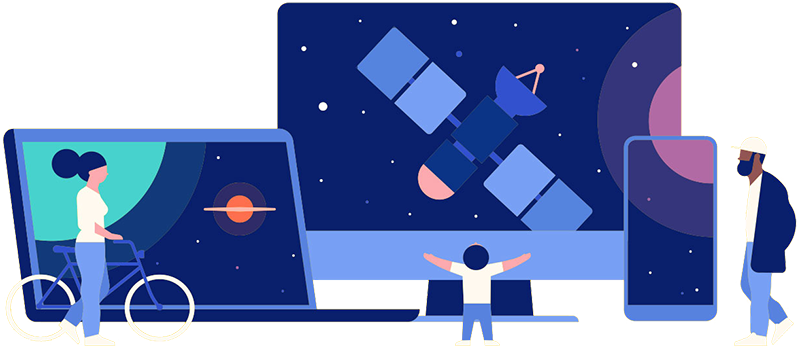
Online Access | Platform & Device Access | Cable or Satellite Access | Over-The-Air Access
Visit Access Guide
Need help accessing PBS Wisconsin anywhere?

Visit Our
Live TV Access Guide
Online AccessPlatform & Device Access
Cable or Satellite Access
Over-The-Air Access
Visit Access Guide
 Passport
Passport

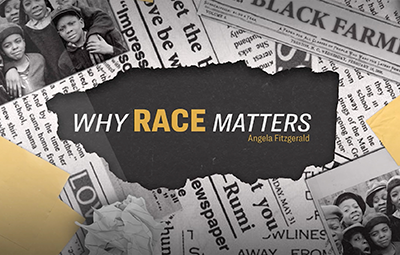
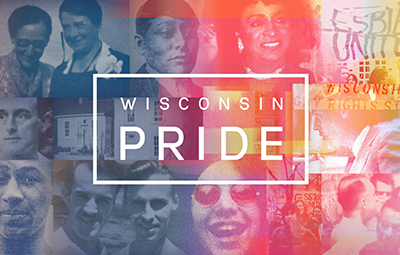
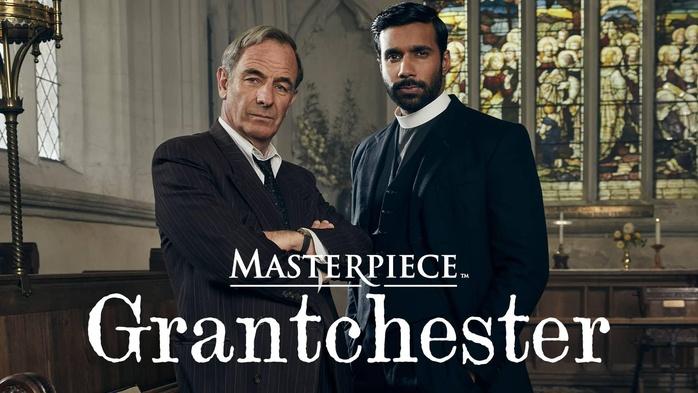


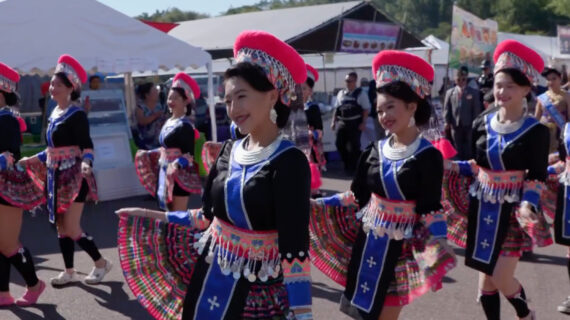
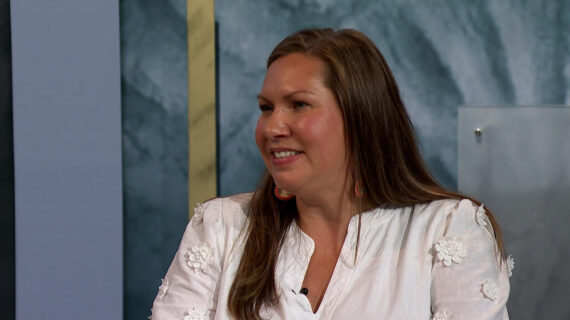
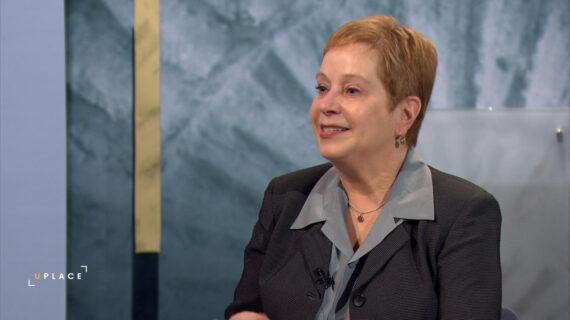

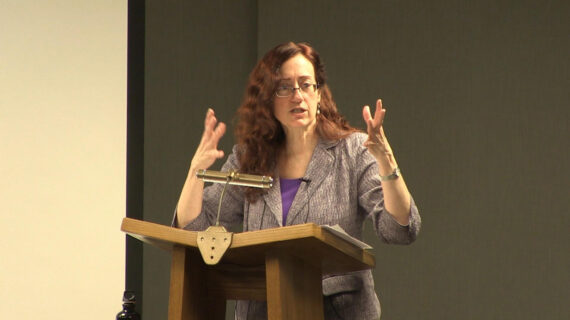
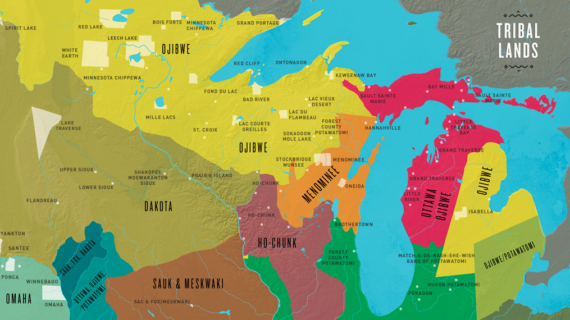
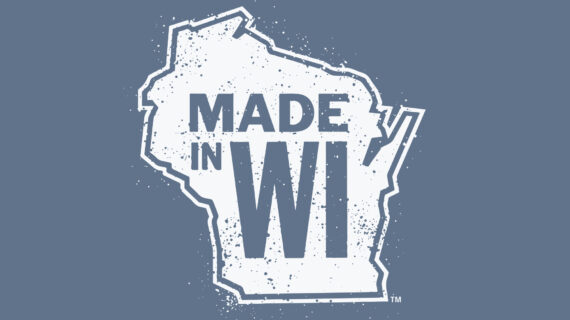

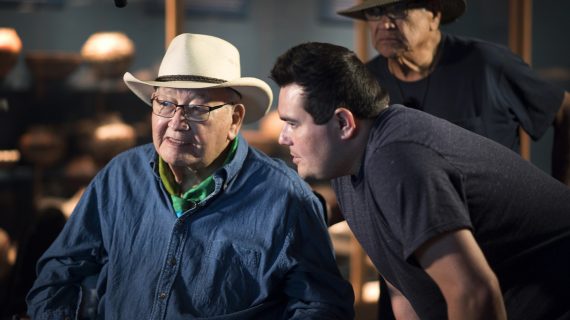



Follow Us